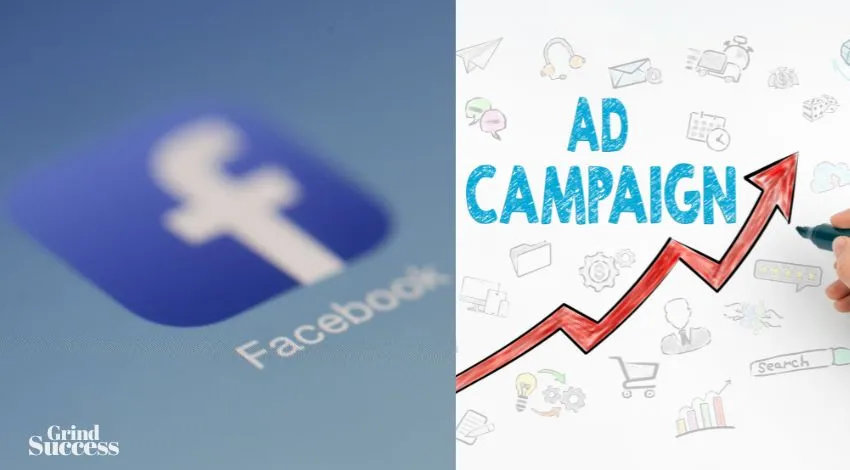Best Practices for Effective Facebook Ad Campaigns
In today’s digital age, Facebook advertising has become a crucial component of many businesses marketing strategies.
With over 2.8 billion monthly active users, Facebook offers an immense potential audience for brands looking to increase their reach and drive sales.

Utilizing tools like Vista Create, which has a Facebook ad maker, can help streamline the ad creation process and ensure your ads meet Facebook’s specifications.
It has been reported that Facebook ads have an average return on ad spend (ROAS) of 152%, making them a highly effective marketing tool.
However, to truly harness the power of Facebook ads, it’s essential to understand and implement best practices for successful campaigns. In this article, we will discuss key strategies and tips for creating effective Facebook ad campaigns.
8 Tips for creating effective Facebook ad campaigns
Here are eight best practices for Facebook Ads to optimize your campaigns.
1. Identifying Your Target Audience
One of the first steps in creating a successful Facebook ad campaign is identifying your target audience. A well-defined target audience enables you to create more relevant and engaging ads, leading to higher click-through and conversion rates.
To identify your target audience, consider factors such as demographics, interests, behaviors, and geographic location. Facebook’s robust targeting options allow you to hone in on your ideal audience with precision, maximizing the effectiveness of your ads.
2. Crafting an Eye-Catching Message
Once you’ve identified your target audience, it’s time to create a compelling message that captures their attention and encourages them to take action.
Your ad copy should be clear, concise, and relevant to your audience, highlighting the unique value proposition of your product or service. Incorporating strong calls-to-action (CTAs) can also help drive conversions and increase the overall effectiveness of your ads.
3. Choosing the Right Ad Format
Facebook offers a variety of ad formats, including image, video, carousel, and slideshow ads, among others. Selecting the appropriate format for your campaign depends on your advertising objectives, target audience, and creative assets.
Experiment with different formats to determine which ones resonate best with your audience and yield the highest engagement and conversion rates.
4. Setting a Budget and Bidding Strategy
Determining an appropriate budget for your Facebook ad campaign is essential for achieving your desired results without overspending. Establish a budget that aligns with your advertising objectives and overall marketing strategy.
When it comes to bidding, you can choose between cost-per-click (CPC) and cost-per-thousand impressions (CPM) options. Consider your campaign goals and audience size when selecting the most suitable bidding strategy.
5. Testing Multiple Ad Variations
To optimize your Facebook ad campaign, it’s crucial to run A/B tests on multiple versions of your ads. By experimenting with different elements such as headlines, ad copy, images, targeting options, and more, you can identify the best-performing combination and refine your ads accordingly.
Furthermore, A/B testing can also be used to gather valuable insight into your target audience and tailor your campaigns to them. Try changing certain variables in each test, such as the demographics or interests of your target audience.
This can provide you with a better understanding of your target audience and their preferences and help you create ads that resonate with them more effectively.
6. Utilizing Facebook’s Advertising Tools
Facebook offers a plethora of advertising tools to help you create, manage, and optimize your ad campaigns.

The Facebook pixel, for instance, is a powerful tool that enables you to track conversions, retarget users who have engaged with your content, and build custom audiences based on website visitors. Make sure to leverage these tools to maximize the effectiveness of your campaign.
7. Tracking Campaign Performance and Optimization
Monitoring your campaign’s performance is crucial for identifying areas for improvement and making data-driven decisions.
Facebook Ads Manager provides a wealth of metrics, such as click-through rates, conversion rates, and ROAS, to help you gauge the success of your campaign. Use these insights to optimize your ad placements, creatives, and targeting options for better results.
8. Measuring Success
Ultimately, the success of your Facebook ad campaign should be measured against your specific advertising objectives and key performance indicators (KPIs).
Common KPIs include conversion rates, cost per acquisition (CPA), and ROAS. Regularly evaluating your campaign’s performance against these metrics will help you determine the effectiveness of your ads and inform future campaign strategies.
Conclusion
Facebook advertising offers immense potential for businesses looking to expand their reach and drive sales. By implementing the above best practices, you can create highly effective ad campaigns that yield impressive results.
Remember that success in Facebook advertising requires ongoing optimization, testing, and analysis – so stay committed to refining your strategies and maximizing the ROI of your campaigns.
This is a Contributor Post. Opinions expressed here are opinions of the Contributor. Grindsuccess does not endorse or review brands mentioned; does not and cannot investigate relationships with brands, products, images used and people mentioned, and is up to the Contributor to disclose.
